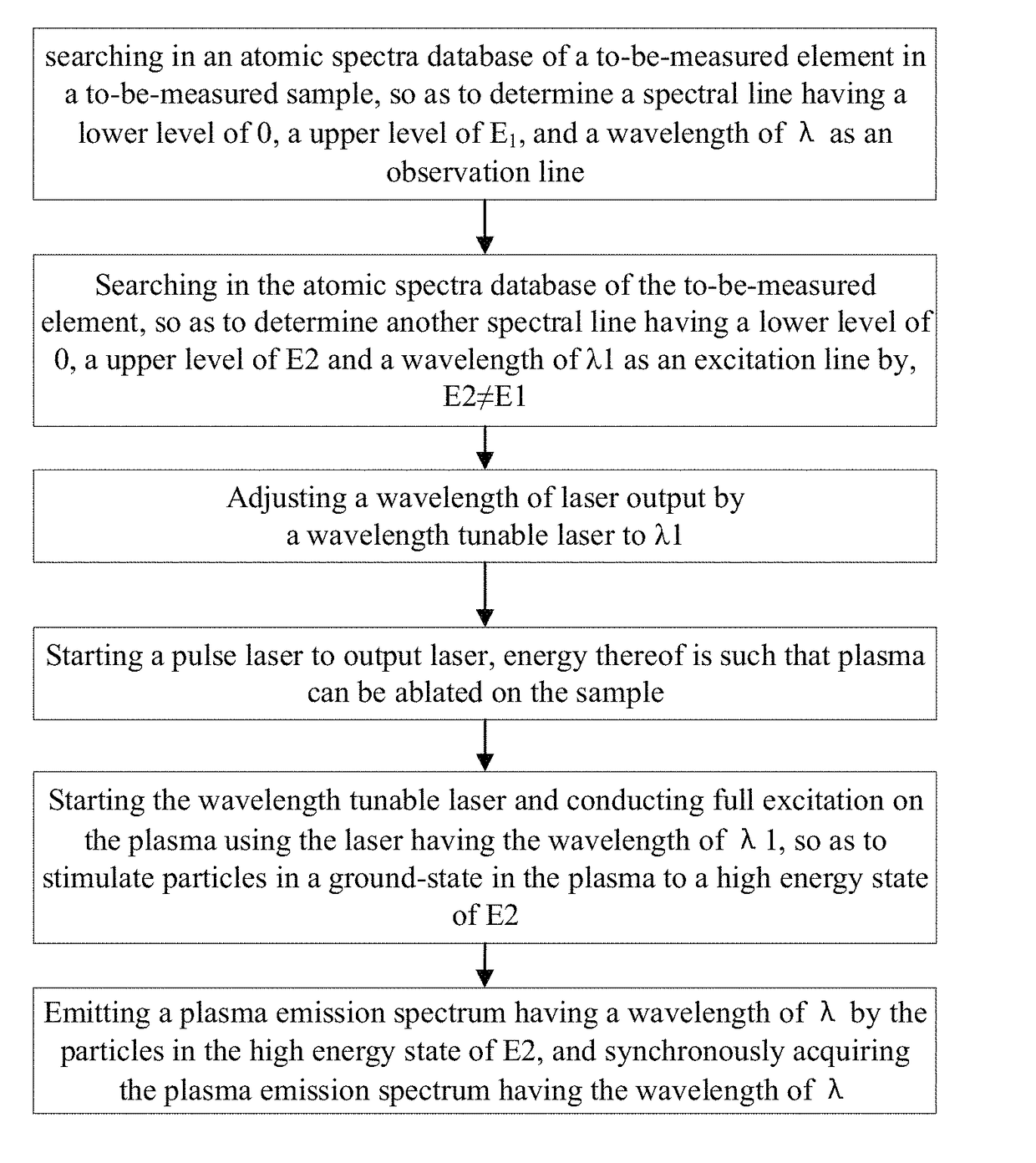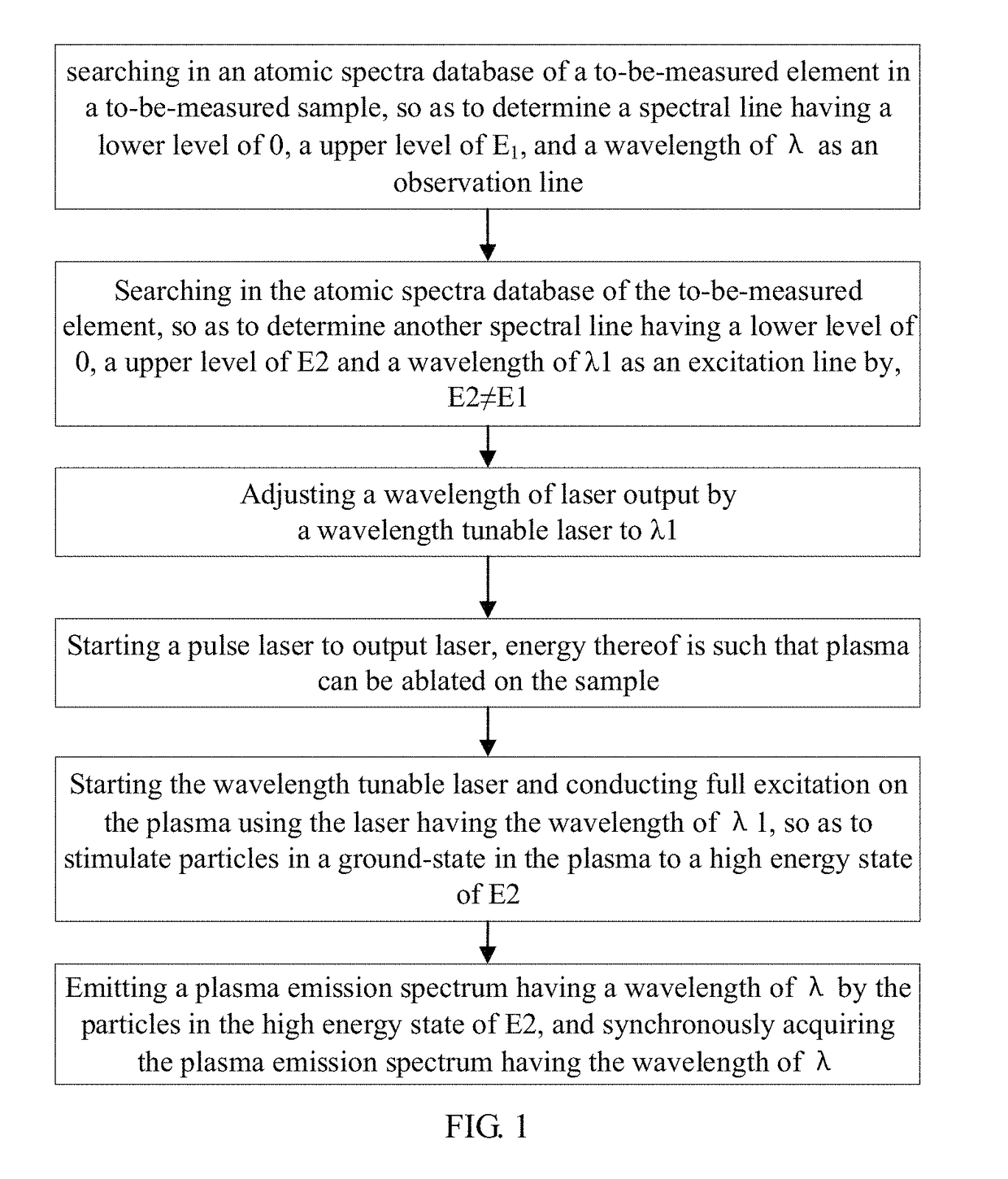Method for inhibiting self-absorption effect in laser-induced breakdown spectroscopy
a laser-induced breakdown and laser technology, applied in the field of laser-induced breakdown spectroscopy, can solve the problems of uniform temporal and spatial distribution of laser plasma, lower analytical accuracy of libs technique than that of a conventional component analysis technique, and unsatisfactory laser plasma self-absorption effect, etc., to achieve the effect of eliminating the self-absorption effect, and reducing the cost of laser plasma
- Summary
- Abstract
- Description
- Claims
- Application Information
AI Technical Summary
Benefits of technology
Problems solved by technology
Method used
Image
Examples
example 1
[0033]Next potassium in potassium bromide is used as an example to specifically explain the invention.
[0034](1) two common-used analytical lines of potassium are K I 766.5 nm and K I 769.9 nm, which features strong self-absorption effect, resulting in self-reversal phenomenon. Severe spectral distortion may cause comparatively large errors of the two lines K I 766.5 nm and K I 769.9 nm during analysis. It can be known by searching in a NIST spectra database that a lower level of each of the two lines K I 766.5 nm and K I 769.9 nm is 0, upper levels thereof are respectively 1.62 eV1.61 eV, and these two lines are used as observation lines;
[0035](2) determining by searching the NIST spectra database that a transition energy level of the other spectral line K I 404.4 nm of potassium is 0˜3.06 eV, selecting this spectral line as an excitation line;
[0036](3) tuning a wavelength of laser output by the wavelength tunable laser to 404.4 nm;
[0037](4) turning on the pulse laser and ablating p...
example 2
[0042]Next aluminum in aluminum bronze is used as an example to specifically explain the invention.
[0043](1) two common-used analytical line of aluminum are Al I 309.3 nm, which feature strong self-absorption effect, resulting in self-reversal phenomenon. Severe spectral distortion may cause comparatively large errors of the lines Al I 309.3 nm during analysis. It can be known by searching in a NIST spectra database that a lower level of the line Al I 309 3 nm is 0, a upper level thereof is 4.02 eV, and this line is used as observation lines;
[0044](2) determining by searching the NIST spectra database that a transition energy level of the other spectral line Al I 394.4 nm of aluminum is 0˜3.14 eV, selecting this spectral line as an excitation line;
[0045](3) tuning a wavelength of laser output by the wavelength tunable laser to 394.4 nm;
[0046](4) turning on the pulse laser and ablating plasma on surface of an aluminum bronze sample;
[0047](5) turning on the wavelength tunable laser an...
PUM
| Property | Measurement | Unit |
|---|---|---|
| transition energy level | aaaaa | aaaaa |
| wavelength | aaaaa | aaaaa |
| wavelengths | aaaaa | aaaaa |
Abstract
Description
Claims
Application Information
 Login to View More
Login to View More - R&D
- Intellectual Property
- Life Sciences
- Materials
- Tech Scout
- Unparalleled Data Quality
- Higher Quality Content
- 60% Fewer Hallucinations
Browse by: Latest US Patents, China's latest patents, Technical Efficacy Thesaurus, Application Domain, Technology Topic, Popular Technical Reports.
© 2025 PatSnap. All rights reserved.Legal|Privacy policy|Modern Slavery Act Transparency Statement|Sitemap|About US| Contact US: help@patsnap.com



